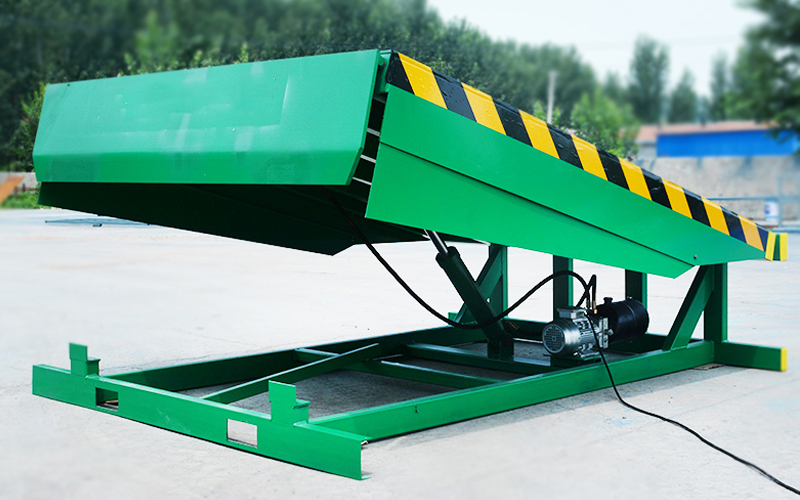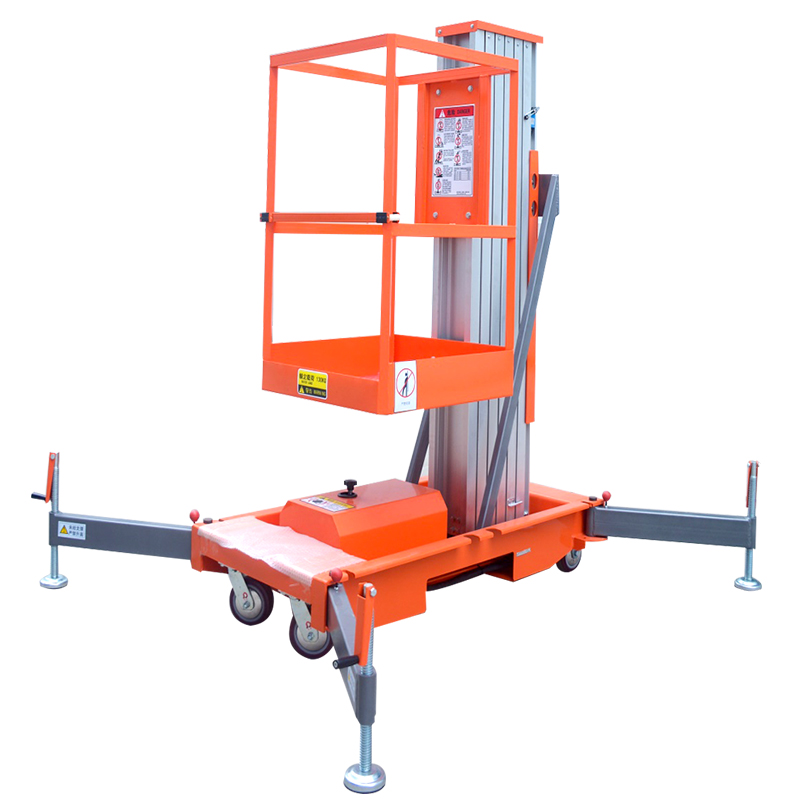Choosing between a mobile scissor lift and a boom lift can be crucial for efficiency and safety on the job site. In "Mobile Scissor Lifts vs. Boom Lifts: Which One Fits Your Needs?", we explore the key differences, advantages, and ideal applications of each to help you make the right decision.
Aerial Work Platforms (AWPs) are essential tools across various industries, offering safe and efficient access to elevated work areas. Whether in construction, maintenance, warehousing, or utility services, these platforms improve productivity and ensure worker safety at height. Among the many types available, mobile scissor lifts and boom lifts are two of the most commonly used.
Selecting the right lift is crucial—not only for getting the job done efficiently but also for maintaining safety and minimizing operational costs. Each type of lift has specific advantages, limitations, and ideal use cases. Choosing the wrong one can result in reduced performance, safety risks, and unnecessary expenses. Therefore, understanding the core differences between these two machines is essential for contractors, facility managers, and site supervisors alike.
Mobile scissor lifts are known for their stability, large platform space, and ability to handle significant weight. They are generally used for straight vertical lifting and are ideal for indoor or flat-surface environments such as warehouses, factories, and indoor construction sites.
On the other hand, boom lifts—including articulating and telescopic models—offer both vertical and horizontal reach, making them ideal for outdoor use and hard-to-access areas. Their flexible reach and maneuverability allow operators to work around obstacles or on uneven terrain, which is not possible with scissor lifts.
In this article, "Mobile Scissor Lifts vs. Boom Lifts: Which One Fits Your Needs?", we’ll break down the differences, advantages, and ideal applications of each lift type. Whether you're renting equipment for a short-term project or making a long-term investment, this guide will help you assess which aerial work platform aligns best with your specific needs.
What is a Mobile Scissor Lift?
A mobile scissor lift is a type of aerial work platform (AWP) designed to lift workers and equipment straight up to perform tasks at elevated heights. Unlike other lifts that may use arms or booms, the scissor lift gets its name from the crisscrossing metal supports beneath the platform, which elongate in a scissor-like fashion when raised. This vertical motion is typically powered by hydraulic, pneumatic, or mechanical systems, providing a safe and stable way to access high places.
Mobile scissor lifts are usually mounted on wheels or casters, making them easy to move around a job site or facility. While their movement is limited to the base's footprint and they can only lift vertically, their design offers enhanced platform space and stability, making them a go-to choice for many indoor and flat-surface applications.
Typical Use Cases
Mobile scissor lifts are commonly used in a wide range of settings due to their simplicity and reliability. Some of the most frequent use cases include:
Indoor Maintenance: Ideal for tasks such as changing light fixtures, ceiling repairs, HVAC installations, or sprinkler maintenance in commercial buildings.
Construction Sites: Frequently used for drywall installation, wiring, painting, or ceiling work where stable vertical reach is required.
Warehouses and Industrial Facilities: Used for stock picking, shelving work, equipment access, and facility maintenance in high-reach storage systems.
Retail and Event Setups: Helpful in setting up displays, signage, or temporary structures indoors.
Their quiet operation (especially electric models), compact size, and ease of use make them particularly suited for indoor environments with limited space and noise restrictions.
Pros of Mobile Scissor Lifts
1. Stability:
Scissor lifts are among the most stable aerial platforms available. Their broad base and uniform vertical lift motion allow for secure operation, even when the platform is fully extended. This is particularly important for precision tasks or when multiple workers are on the platform at once.
2. Larger Platforms:
One of the biggest advantages of a scissor lift is the size of its working platform. Most scissor lifts offer spacious platforms that can accommodate multiple workers, tools, and materials simultaneously. This makes them ideal for tasks that require team collaboration or frequent repositioning of materials.
3. Higher Weight Capacity:
Mobile scissor lifts generally have a higher load capacity than boom lifts. They can carry more weight—sometimes over 1,000 lbs—making them well-suited for jobs that involve heavy tools or construction materials.
4. Simplicity and Cost-Effectiveness:
Scissor lifts are straightforward to operate and maintain. Their mechanical simplicity often translates to fewer mechanical issues and lower maintenance costs. They are also generally more affordable than boom lifts, both in terms of purchase price and rental fees, making them a cost-effective solution for many businesses.
Cons of Mobile Scissor Lifts
1. Limited Vertical Reach:
While mobile scissor lifts are excellent for moderate-height tasks (typically ranging from 15 to 50 feet), they are not designed for extreme vertical access. If your work requires heights beyond this range, a boom lift or other specialized equipment might be necessary.
2. No Horizontal Outreach:
Scissor lifts are strictly vertical in movement. They cannot extend outwards to reach over obstacles or access hard-to-reach areas. This makes them less versatile in environments where positioning directly beneath the work area is not possible.
3. Less Maneuverability:
Compared to boom lifts, mobile scissor lifts have limited flexibility when it comes to navigating complex or uneven terrain. Most are designed for flat, stable surfaces, which limits their use in outdoor or rough terrain environments. While some rough-terrain models exist, they are less common and more expensive.
Mobile scissor lifts offer a stable, spacious, and cost-effective solution for working at moderate heights. Their vertical lift design, large platforms, and high weight capacities make them perfect for indoor maintenance, construction, and warehouse operations. However, they do come with limitations in terms of reach and maneuverability. Understanding these strengths and weaknesses is key to determining whether a mobile scissor lift is the right fit for your project. In the next section, we’ll look at boom lifts and see how they compare.
What is a Boom Lift?
A boom lift is a type of aerial work platform (AWP) designed to provide both vertical and horizontal reach, enabling workers to access difficult or elevated areas safely and efficiently. Boom lifts are often mounted on wheeled or tracked bases and use a hydraulic arm—known as the "boom"—to extend the work platform to various angles and elevations. These machines are particularly useful in jobs where workers need to move around obstacles or reach over gaps that other lifts, like scissor lifts, cannot manage.
There are two primary types of boom lifts: articulating boom lifts and telescopic boom lifts, each serving different operational needs.
Articulating Boom Lifts
Also called knuckle booms, articulating boom lifts feature multiple joints along the arm, allowing the boom to bend and maneuver around obstacles. This flexibility makes them ideal for accessing tight or awkward spaces, such as the inside of structures, areas with overhead obstructions, or behind equipment.
Telescopic Boom Lifts
Telescopic boom lifts, also known as straight or stick booms, extend in a straight line and offer greater horizontal and vertical reach compared to articulating models. Though they lack the flexibility of jointed arms, they are often preferred for jobs that require maximum height and outreach, such as exterior building maintenance or work on tall structures.
Typical Use Cases
Boom lifts are widely used in industries where elevated access is required in challenging environments. Common use cases include:
Outdoor Construction Projects: Ideal for exterior wall work, roofing, or facade repairs.
Utility and Electrical Work: Frequently used to reach telephone poles, power lines, and streetlights.
Tree Trimming and Landscaping: Useful for safely reaching tall trees or vegetation in difficult terrain.
Bridge and Overpass Work: Allows workers to access high and complex infrastructure points.
Film Production and Event Setup: Helpful in positioning lighting, cameras, or decorations in elevated or otherwise inaccessible spots.
Because of their long reach and flexible movement, boom lifts are most often used outdoors or in large, open indoor spaces such as warehouses, stadiums, or factories.
Pros of Boom Lifts
1. High Vertical and Horizontal Reach:
One of the most significant advantages of boom lifts is their ability to reach both high and distant work areas. Telescopic boom lifts can extend up to 180 feet or more in height, and their horizontal reach can exceed 80 feet, making them essential for tasks that cannot be completed directly beneath the work area.
2. Excellent Maneuverability:
Articulating boom lifts, in particular, are highly maneuverable. Their multiple joints allow the boom to bend around corners and navigate tight spots, providing access to areas that would be impossible with a vertical-only lift like a scissor lift.
3. Versatility Across Various Terrains:
Many boom lifts come equipped with 4WD, outriggers, or all-terrain tires, allowing them to operate on slopes, gravel, mud, or other rough surfaces. This makes them a versatile choice for outdoor job sites or uneven environments where stability and access are more challenging.
Cons of Boom Lifts
1. Smaller Platforms:
Compared to scissor lifts, boom lifts generally have smaller platforms. They are designed to carry fewer workers—often one or two—and limited equipment. This can slow down certain tasks that require more space or teamwork on the platform.
2. Higher Cost:
Boom lifts are generally more expensive to rent or purchase than scissor lifts. The cost is higher due to their more complex design, enhanced capabilities, and increased maintenance requirements. For short-term or budget-sensitive projects, this can be a deciding factor.
3. Requires More Training:
Because of their advanced controls, varying boom positions, and the potential for operating on rough or elevated terrain, boom lifts require more in-depth operator training. Ensuring that workers are properly certified and trained is essential to maintain safety standards and compliance with local regulations.
Boom lifts offer unmatched flexibility and reach in the world of aerial work platforms. Whether it’s navigating around obstacles with an articulating boom or accessing extreme heights with a telescopic boom, these lifts are indispensable for jobs requiring both elevation and reach. Though they come with higher costs, smaller platforms, and the need for specialized training, their benefits often outweigh the drawbacks when working in complex, high-elevation, or outdoor environments. When compared to scissor lifts, boom lifts provide a more dynamic and capable solution—particularly for projects with demanding access needs.
Key Factors to Consider When Choosing
Selecting the right aerial work platform (AWP) is about more than just picking the most powerful or tallest machine—it’s about matching the equipment to the specific demands of your job site. Both mobile scissor lifts and boom lifts serve unique purposes, and choosing the wrong one can affect efficiency, safety, and costs. Below are the key factors to consider when deciding which lift best fits your needs.
1. Height Requirements
One of the most obvious considerations is the maximum working height required for your project. If your tasks are mostly within 20–40 feet, a scissor lift might suffice. However, for higher elevations (60–180 feet) or jobs that require access to tall buildings, poles, or structures, a boom lift—particularly a telescopic model—offers the reach you need.
2. Reach: Vertical vs. Horizontal
Scissor lifts are designed for vertical lifting only, meaning you need to be positioned directly below the work area. In contrast, boom lifts provide both vertical and horizontal reach, allowing operators to reach over or around obstacles, rooftops, or uneven terrain. For complex environments where direct access is not always possible, a boom lift is often the better choice.
3. Terrain and Work Environment
The type of surface you're working on plays a critical role in choosing the right lift.
Indoor, flat, and smooth surfaces: Scissor lifts (especially electric models) are quieter, more compact, and safer for indoor use.
Outdoor or uneven terrain: Boom lifts—especially those with 4WD, outriggers, and rough-terrain tires—are built to handle challenging ground conditions.
If your job site includes gravel, slopes, mud, or tight navigation, boom lifts offer more stability and mobility.
4. Load Capacity Needs
Scissor lifts generally support heavier loads and can accommodate multiple workers, tools, and materials at once. Typical capacities range from 500 to 1,500 lbs or more. Boom lifts, on the other hand, usually support smaller loads (often under 500 lbs) due to the extended reach and arm mechanics. If your tasks require transporting a lot of material or a team of workers on the platform, a scissor lift may be the better choice.
5. Frequency and Type of Use
Consider how often and for what purposes you'll use the lift:
Frequent indoor use for general maintenance, warehousing, or facility upgrades favors the scissor lift for its simplicity and cost-efficiency.
Occasional outdoor use, especially for specialized tasks like sign installation, tree trimming, or building inspection, makes a boom lift more appropriate due to its reach and adaptability.
If you anticipate regularly switching between different job sites and tasks, a boom lift’s versatility may provide better long-term value.
6. Budget Constraints
Scissor lifts are generally more affordable to rent, operate, and maintain. They’re a great choice for budget-conscious projects that still require safe vertical access. Boom lifts cost more due to their advanced mechanics, greater reach, and higher operational complexity.
If cost is a critical factor and your work requirements fall within a scissor lift’s limitations, you could save significantly without sacrificing safety or productivity.
7. Safety and Operator Training
Operating a boom lift usually requires more extensive training and certification, as it involves complex controls, risk of tipping on uneven ground, and height-related hazards. Scissor lifts, by comparison, have simpler controls and fewer risks, making them easier to operate with basic training.
However, regardless of type, safety training is essential, and operators should always follow OSHA or local safety guidelines.
Comparison Table: Scissor Lifts vs. Boom Lifts
| Feature | Mobile Scissor Lift | Boom Lift |
|---|
| Lift Direction | Vertical only | Vertical and horizontal |
| Max Working Height | Up to ~50 ft | Up to ~180 ft (telescopic models) |
| Horizontal Reach | None | Up to ~80 ft (telescopic) |
| Platform Size | Large (multi-worker) | Small (1–2 workers) |
| Load Capacity | Higher (500–1,500+ lbs) | Lower (up to ~500 lbs) |
| Indoor Suitability | Excellent | Limited (size, noise) |
| Outdoor Suitability | Limited unless rough-terrain model | Excellent (various terrains) |
| Maneuverability | Limited | High (especially articulating models) |
| Training Required | Basic | Advanced |
| Cost (Rental/Purchase) | Lower | Higher |
| Best for | Indoor tasks, stable terrain | High or hard-to-reach outdoor jobs |
Choosing between a mobile scissor lift and a boom lift isn’t about which is “better”—it’s about which is better suited for your specific application. Start by assessing your work height, terrain, reach requirements, and budget. If you need stable, heavy-duty vertical access indoors, a scissor lift will likely be your most efficient and economical choice. But if you're dealing with obstacles, outdoor terrain, or extreme heights, the flexibility and reach of a boom lift can’t be matched.
Evaluating these key factors will help you make a smarter, safer, and more cost-effective equipment decision—whether for a one-time rental or a long-term investment.
Use Case Scenarios
To further clarify the differences between mobile scissor lifts and boom lifts, let’s look at four common job situations and examine which type of lift is better suited for each.
Scenario 1: Indoor Warehouse Work
In a busy warehouse, workers may need to access high shelves, lighting fixtures, HVAC systems, or inventory storage areas. The environment is typically clean, level, and indoors with height requirements under 30 feet.
Best choice: Mobile Scissor Lift
Scissor lifts offer excellent vertical access in tight indoor spaces.
Their larger platforms allow workers to carry tools and parts efficiently.
Electric models run quietly with zero emissions, perfect for indoor air quality and noise limits.
Scenario 2: Exterior Building Maintenance
Tasks like window cleaning, facade repairs, or painting often involve reaching heights across large sections of a building’s exterior, sometimes obstructed by landscaping or architectural features.
Best choice: Boom Lift (Articulating or Telescopic)
Boom lifts can extend both upward and outward to reach over obstacles such as hedges, balconies, or awnings.
Articulating boom lifts allow operators to navigate around corners and angles of buildings.
Telescopic models are ideal for straight vertical and horizontal access on taller structures.
Scenario 3: Utility Line Repairs or Tree Trimming
Utility work often involves accessing poles, overhead lines, or branches in locations that are uneven, obstructed, or otherwise difficult to reach directly.
Best choice: Boom Lift
The high vertical and horizontal reach of telescopic boom lifts allows workers to position themselves safely near power lines or tree limbs.
Boom lifts with rough-terrain capabilities can handle grassy, sloped, or unpaved areas with ease.
Articulating models are especially useful for working around utility poles or navigating between trees.
Scenario 4: Construction on Uneven Ground
On active construction sites, the terrain is often rough and unpaved, with materials and structures obstructing access. Work might require access at multiple angles and elevations.
Best choice: Boom Lift (Rough-Terrain)
Boom lifts offer greater maneuverability and can be stabilized on uneven surfaces using outriggers or 4WD systems.
Their extended reach allows access around job site obstacles like steel frames, scaffolding, or machinery.
In summary, evaluating the site conditions and task requirements is essential for choosing the right lift. Each scenario highlights how job context shapes the best equipment decision.
Conclusion
Choosing between a mobile scissor lift and a boom lift comes down to understanding the specific demands of your job. Scissor lifts offer greater platform space, load capacity, and simplicity—ideal for indoor, vertical-access tasks on flat surfaces. Boom lifts, on the other hand, provide superior reach, maneuverability, and terrain versatility, making them better suited for outdoor or hard-to-reach projects.
To make the best decision, evaluate your height requirements, work environment, load needs, and budget constraints. Also, consider how often the lift will be used and what kind of operator training is necessary.
If you're unsure, it’s wise to consult with a trusted equipment rental or sales expert. They can help assess your site conditions and recommend the safest, most cost-effective lift for your job. With the right choice, you’ll enhance productivity, safety, and overall project success.
We specialize in the manufacturing and global distribution of high-quality mobile scissor lifts and boom lifts. Designed for safety, durability, and performance, our equipment is ideal for a wide range of applications, from indoor maintenance to outdoor construction and utility work. Whether you need vertical access with maximum platform space or extended reach in challenging environments, we offer reliable solutions to meet your project needs. With the ability to ship to any country, we ensure fast, secure delivery and dedicated customer support worldwide. Partner with us for efficient, cost-effective aerial work platform solutions you can trust. Contact us now!
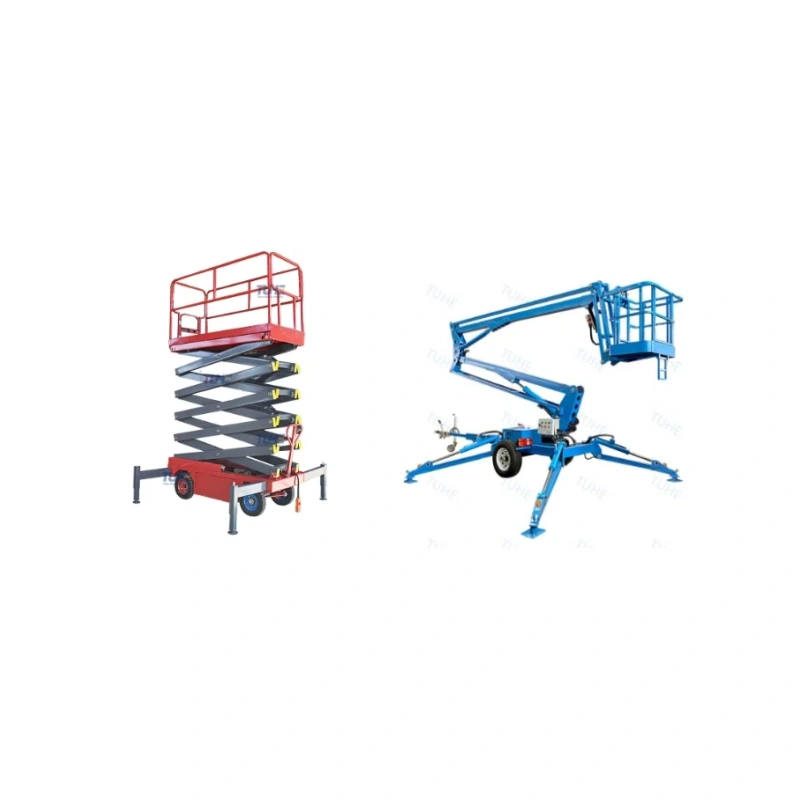
222.webp)
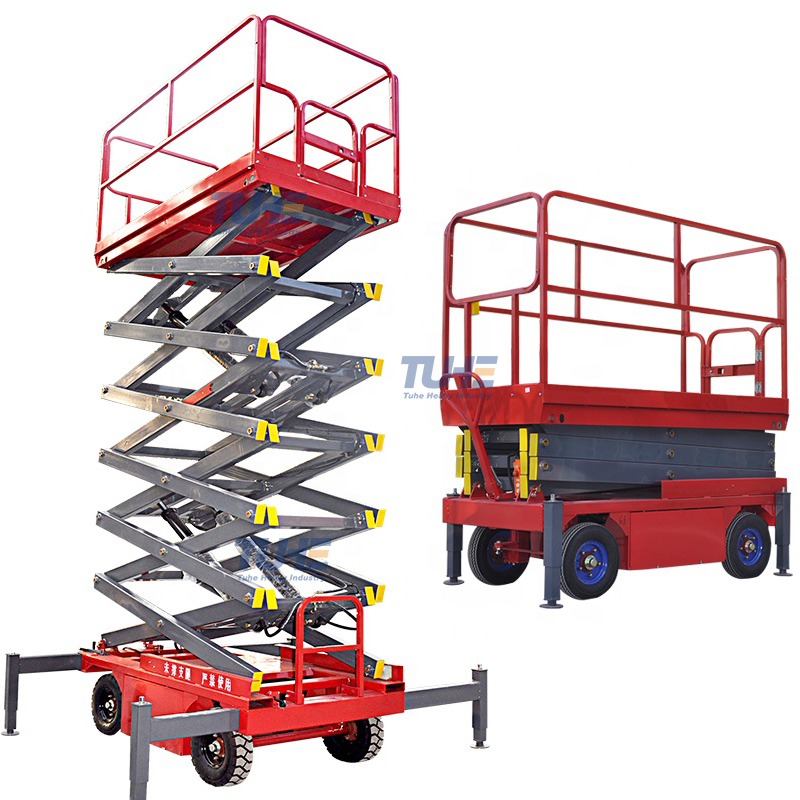
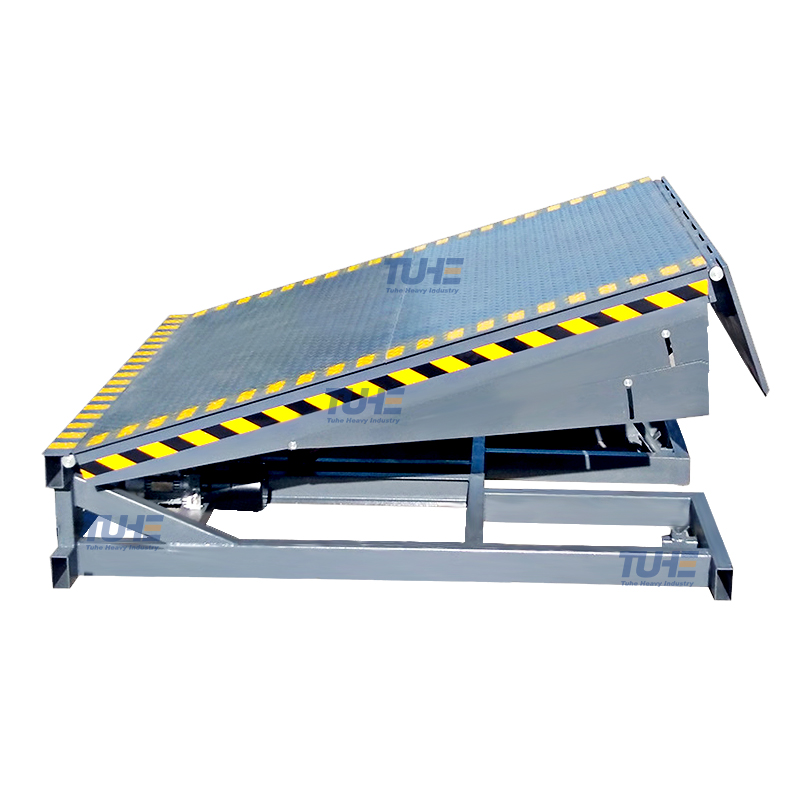
660.webp)
503.webp)
695.webp)
